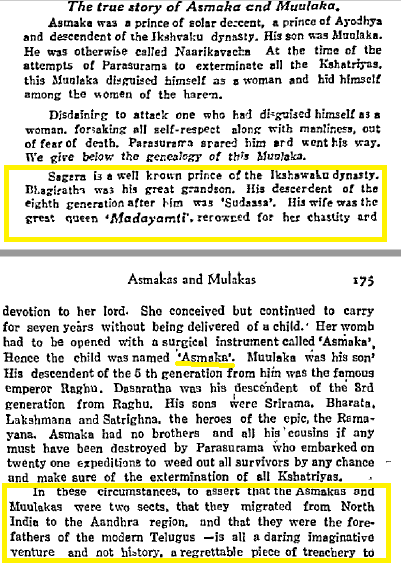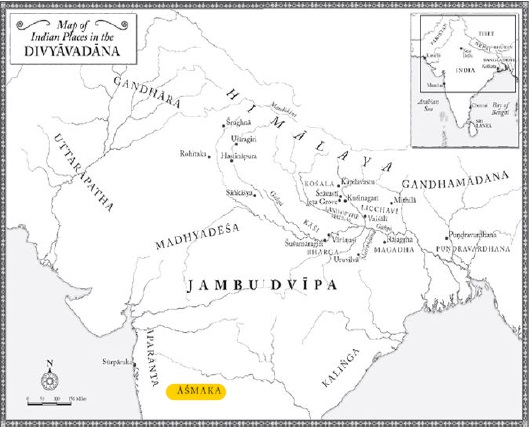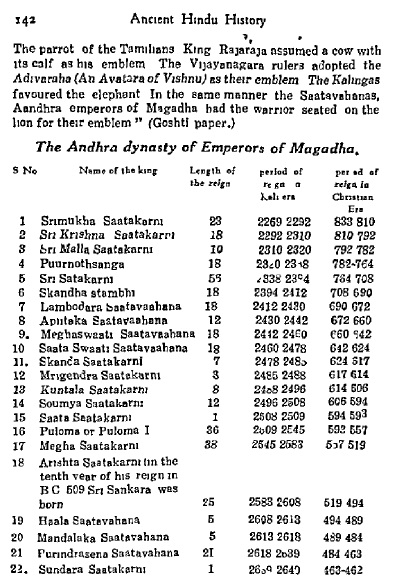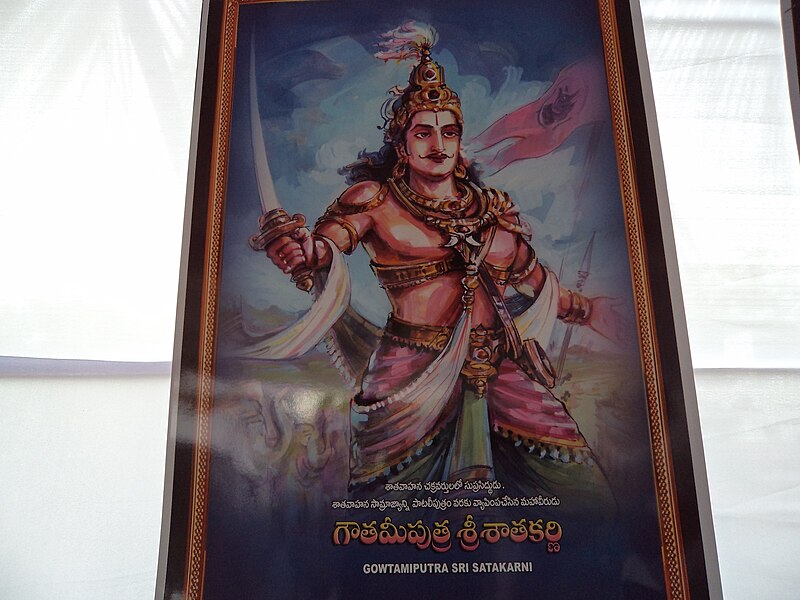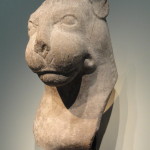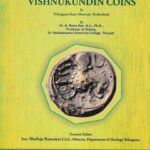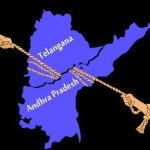
Introduction
After a long gap—far too long, some would say—we return once more to ye hallowed topic of history. At once inspiring and controversial, it has of late, become a playground for pompous & politicking poltroons and vainglorious drohis who make virtue of alliance with videshis against fellow Bhaaratheeyas.
It is true that turning history into a competitive sport has resulted in some communities being deprived of their rightful personalities. But unfortunately, mature commentators are few and far between. Many have become too quick to lend credibility to colonising “creators” of history, without questioning this colonial historiography.
Therefore, it has become imperative that the Imperial History of India in general, and the Imperial History of Aandhras in particular, find its bedrock in the Pauranic Chronology. When there are too many competing versions not only of history but historiography itself, then the native historiography must become the guiding record. Indeed, the time has come to question not only the motives of Pandiths (which videshis like to do), but to also question the motives of foreign historians themselves (who made them boss?).
The provenance of the Aandhra province has long been a matter of debate. Some point to the Aitareya Braahmana, while others point to Archaeology. The net result has been a hodge-podge of history, making historical Aandhra desa a hotbed of caste cacophony. Nevertheless, the orthodox (Aasthika Vaidika) view of history is clear. In two previous Articles, we answered the question who were the Aryas and who were the Andhras successively. In this article, we answer the question conclusively of who were the Satavahanas.
Background
The cities of Pratishtaana and Amaravati have long been connected with the Satavahanas. However, their rise to royal status is in fact linked with the city of Srikakulam. The Brhath Katha of Gunaadya is one of the greatest collections of historical stories and legends in the world. However, the grand corpus of this text has been lost. Instead, numerous redacted recensions have come down to us, in the form of the Kathasaritsagara of Somadeva and the Brhath Katha Manjari of Kshemendra.
Srikakulam
The city of Srikakulam was famous in ancient days as the first capital of the Aandhras. Indeed, the story of the Aandhras is traced to Aandhra Nripathi who is said to have led his people from the Eastern province through Eastern Ghats, into what is now Kalingaandhra (Uttarandhra). Though this region is a crossroads of culture today (both Telugu & Odia), it nevertheless has a hallowed history as a city of Aandhra Kings.
“According to the story recorded in the Brhatkathaa, Deepakarni, the king of Sreekakulam found a prince riding on the back of a lion (Simhadhara) and adopted him as his son. The boy became Saatavaahana, Saata being the name of the lion, and became the founder of the Saatavaahana dynasty.” [5,77]
This is confirmed in the Kathasaritsagara of Somadeva. Here the story is as follows:
“Kaanabhooti then asked Gunaadhya, ‘Why was the king called Saatavaahana?’ ‘Listen and I will tell you,” said Gunaadhya.
‘There was once a very powerful king called Deepakarni. He loved his wife Saktimatee more than his own life. One day when she was sleeping in the pleasure garden, she was bitten by a snake and died. The king, even though he did not have a son, took a vow of celibacy. Siva came to him in a dream and said, “When you are out hunting you will see a boy riding a lion, Take him home with you. He shall be your son!”
The king was filled with joy when he woke up and recalled his dream. ‘One day while the king was out hunting, he was led far away into the forest. In the middle of the day, the king saw a young boy on the shores of a lake of lotuses, shining like the sun sitting astride a lion. The lion was thirsty and set the boy down by the lakeshore. The king remembered his dream and killed the lion with a single arrow. ‘The lion shed his body and took the form of a man. ‘What is all this?’ cried the king in astonishment. The man said, ‘King, I am a yaksha named Saata and I serve Kubera.
Long ago I saw the daughter of a rshi as she bathed in the Gangaa. She also fell in love with me and we got married by gandharva rites. Her relatives were very angry when they found out and they cursed us to become lions because we had followed our own desires. They said that her curse would end when she gave birth to a son and that mine would end when I was killed by your arrow. So we became a pair of lions. In time she became pregnant and died after giving birth to this boy. I brought him up on the milk of other lionesses. Today, your arrow has freed me from my curse. I give you my son for this was ordained by those rshis long ago.’ The yaksha named Saata disappeared and the king took the boy home. Because he had ridden upon Saata, he was named Saatavaahana, ‘he who has Saata as is mount’. In time, Saatavaahana was placed on the throne when King Deepakarni retired to the forest, Saatavahana became king of the earth.” [7, 37]
The name Satavahana is a compound of Saata (lion)+Vahana(vehicle or mount). Thus, they were the dynasty of “Kings who rode the Lion as Mount”. While the story is itself fantastical, the historical elements become valuable to us. There was a King Deepakarni of Srikakulam, and he adopted a boy named Satavahana (eventually Satakarni). The rest can be taken as mythos for the benefit of our rational-empiricists.
Having established the origin of the Satavahanas (Saathavaahanas), it then becomes necessary to demolish some untruths that have become fashionable of late. One such fable is that Asmakas were Aandhras (or Telanganites as the new state has lately asserted). Here is Orthodox Pandith Kota Venkatachalam gaaru on the matter:
Asmaka
The ancient name of Telugu-land was unquestionably Aandhra. The two words are in fact synonyms. As discussed in other articles, history has become a competitive sport in India. Indeed, it has been so for far too long. In the quest to legitimise and even mythologise, dynasties and modern political power groups seek to appropriate or reassign historical figures based on political exigency. But a civilization built on truth as its highest value, must espouse it in all things. So to is it the case with history.
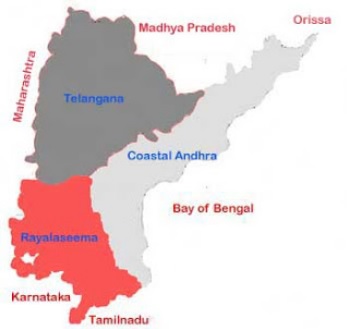
In the spirit of demonstrating that it’s a two way street, we note to our Maraattha friends that of late another state has been trying to appropriate your heritage. New political units often feel the need to emphasise separateness (often where there is none). In the process of rejecting their own heritage, they seek to appropriate that of others. Asmaka desa, being one of the famous 16 Mahajanapaadhas is one such example.
The exact location of Asmaka desa is clarified elsewhere as none other than the headwaters of the Godavari river (a.k.a. Marathwada). [8,77] This, therefore, is the true ancient heritage of the land of the Maharattas.
Although connected to modern Maharashtra by later marriage (Naganika) and childhood (Pratishtaana), Satakarni is an Aandhra by lineage, adoption,and Pauranic imprimatur. Correspondingly, Asmaka belongs to Maharashtra by geographic location, riverine description, and again, Pauranic stamp.
Aandhra

The Ancient period of Andhra is still shrouded in mist. While the Puranas have recorded king lists naming rulers from this part of India, modern historians are still reconciling these with the historical record.
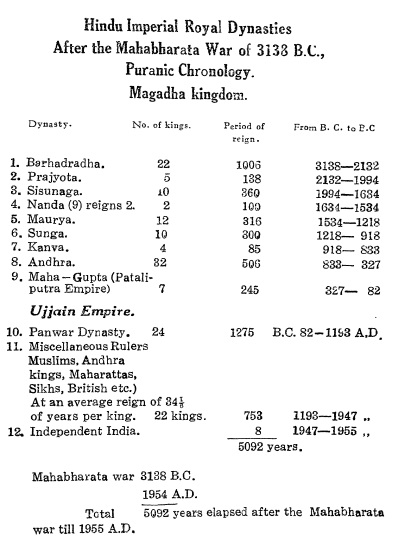 Pandith Kota Venkatachalam, however, has managed to do precisely that. First and foremost, he established quite clearly that the Aandhra tribe (now upajana/sub-ethnicity) is not only an offshoot of the Vedic Aaryas of the Indus Valley, but is actually descended from the Chandravamsa lineage of Yayati. Prince Aandhra Nripathi was his descendant and left Praachya (eastern) desa (now Anga/Odisha) & passed from Kalinga into Trikaalinga, that is Trilinga desa.
Pandith Kota Venkatachalam, however, has managed to do precisely that. First and foremost, he established quite clearly that the Aandhra tribe (now upajana/sub-ethnicity) is not only an offshoot of the Vedic Aaryas of the Indus Valley, but is actually descended from the Chandravamsa lineage of Yayati. Prince Aandhra Nripathi was his descendant and left Praachya (eastern) desa (now Anga/Odisha) & passed from Kalinga into Trikaalinga, that is Trilinga desa.
Prince Aandhra, in turn, gave his name to the Trilinga/Telinga land, which thus dubbed Aandhra desa (after him). Therefore, Aandhra referred not only to Kosta, but also to Rayalaseema and what is now Telangana. The origin of the Aandhras is therefore not the controversial story about the Sons of Vishvamitra (those were Jal-aandhras) or the Northern Aandhras of Jalandhar. The southern Aandhras are the Aandhras of today.
 Another question is whether the Pauranic Aandhra Dynasty were actually Satavahanas. According to the current historical paradigm, the Aandhras were originally feudatories of the Mauryas (who incorporated Aandhra desa into the Mauryan Empire). They are delineated in the king lists after the Sungas and Kanvas. The Aandhra minister defeated and overthrew the last of the Kanva kings and conquered Magadha. Pauranic history gives us a clear history of 32 Aandhra Kings in Magadha (many with the Satakarni patronymic of the Satavahanas) spanning 506 years.
Another question is whether the Pauranic Aandhra Dynasty were actually Satavahanas. According to the current historical paradigm, the Aandhras were originally feudatories of the Mauryas (who incorporated Aandhra desa into the Mauryan Empire). They are delineated in the king lists after the Sungas and Kanvas. The Aandhra minister defeated and overthrew the last of the Kanva kings and conquered Magadha. Pauranic history gives us a clear history of 32 Aandhra Kings in Magadha (many with the Satakarni patronymic of the Satavahanas) spanning 506 years.
The king lists then record that the Aandhras were then followed by the famous Gupta dynasty who were also called Aandhra-bhrithyas, or servants of the Aandhras, since the Guptas had served as Generals for Aandhra Kings. However, this would also mean the entire current Indian historical record is off by at least several hundred years, as Pauranic history dates the Gupta Dynasty to 327 BCE, not the current 320 CE.
In any event, we do know that the Satavahanas also ruled Aandhra from Amaraavathi. The present historical and the Pauranic historical construct both assert that the Satavahanas were one and the same as the Aandhras, beginning with their first king Simuka.
Vamsa Vrksha (Genealogy)
Satakarni
Simuka is the first recorded king of the Satavahana dynasty, and is dated to 221 BCE per the current chronology or 833 BCE per Puraanas. Satavahana comes from the words Sata (Lion) and Vahana (Vehicle). Thus, the Satavahanas were those who rode the Lion as their Mount. The Lion and Narasimha Swami remain important to Aandhras to this day. Foreign accounts from the time record that the ” the Andarae, a still more powerful race, which possesses numerous villages, and thirty towns defended by walls and towers, and which supplies its king with an army of 100,000 infantry, 2,000 cavalry, and 1,000 elephants” were next in power to the Mauryas.
 In fact, following the Sungas and Kanvas, the Aandhra dynasty is credited to be the next dynasty to establish its rule in Magadha, after conquering Pataliputra. The Mathsya Purana lists 32 Andhra rulers in the King Lists. Simuka (or Srimukha) was the minister of the last Kanva King of Magadha. His family name was Balin, and he overthrew the reigning power and established his dynasty in Magadha with the help of warriors from Aandhra itself.
In fact, following the Sungas and Kanvas, the Aandhra dynasty is credited to be the next dynasty to establish its rule in Magadha, after conquering Pataliputra. The Mathsya Purana lists 32 Andhra rulers in the King Lists. Simuka (or Srimukha) was the minister of the last Kanva King of Magadha. His family name was Balin, and he overthrew the reigning power and established his dynasty in Magadha with the help of warriors from Aandhra itself.
After Srimukha, the next Emperor of note was Sri Malla Saatakarni (Emperor Saatakarni I—different from Saatavaahana of Srikakulam).“The third king was Sri Saatakarni I, whose figure was sculptured in rilievo at Naneghat along with the figures of his father Simuka, his queen Naaganikaa, a Maharathi, and three princes. He conquered western Malwa, and an inscription of his queen records his performances of certain great sacrifices and the fees paid to the officiating priests, including tens of thousands of cows, thousands of horses, numbers of elephants, whole villages and huge sums of money (tens of thousands of kaarshaapanas). Twice it appears that Saatakarni proclaimed his suzerainty by performing the horse-sacrifice” [9, 84]
King Kharavela of the Odia Mahameghavahana dynasty was a Jain ruler. He boasts of conquests in Eastern and Southern India, and many other victories in the Hathigumpha Inscription. “Satakarni (the first) repulsed the attack of Kharavela and re-established his authority in the east. To mark his achievement, he took the title of ‘Dakshinapathapati’ and performed the second Ashwamedha sacrifice. His other titles include ‘Samrat’ and ‘Aprathihata Chakra’ [Turner of the unrepulsed wheel]” [1, 11]
“Naganika, the daughter of Maharathi Tranakayiro and the wide of Satakarni I was a remarkable lady and left the impress of her great personality on the administration. Like her husband she was the champion of the Vedic religion.” [1, 13]
Satakarni II is the Emperor who even western historians confirmed as ruler of Pataliputra, Vidisha and Kalinga. There are coins of him and inscription at the Gateway of Sanchi.[1,13]

“Kuntala Satakarni was a powerful ruler. His dominions included Dakshinapatha and parts of North India. He was a pleasure-loving king and was responsible for the accidental death of his queen Malayavati. The incident is mentioned in a commentary in the Kamasutra.” [1,13]
The next Emperor of note was a man of pleasure. What Vasantaraya was to the Reddi Raajyam, so was Kuntala to the Satavahana Empire.
“Kuntala Satakarni ruled for a short period of eight years only. He is mentioned in a number of literary works like Kavya Mimasa of Rajasekhara, Kamasutra of Vatsyayana and Brihat Katha of Gunadhya. His rule is memorable as Sanskrit replaced Prakrit as the official language of the empire. A small incident led to this change. Satakarni, who was ignorant of Sanskrit, had to cut a sorry figure before his queen who spoke in Sanskrit. He therefore resolved to master that language in six months. Thereupon, Sarva Varma, one of the ministers of Satakarni, prepared Katantra Vyakarna and enabled his master to fulfil his resolve. Due to his new-found love for Sanskrit, Satakarni made it the official language of his empire.” [1, 13]
“Gunadhya, another minister of Satakarni, had great love for Prakrit and Desi, the local dialects. He therefore retired to the forests, and composed Brihat Katha in the Paisachi dialect. Satakarni, the new champion of Snaskrit, could not tolerate a work in a non-Sanskrit language. He therefore ordered Gunadhya to destroy his work except on ‘Lambaka.’ The fragmentary Brihat Katha became the source for Kathasaritsagara. Sarva Varma was made the Lord of the city of Baru Kuccha or modern Broach in Gujarat. “ [1,13]
The next notable dynast was Haala. Satavahana Hala wrote the Gatha Saptasati. He is feted as a master of literature and a promoter of Prakrit. It is often debated whether the Satavahanas could be considered “Aandhras” when they wrote in Praakrtham. However, as Pandith Chelam explains elsewhere, the administrative language was Prakrit, but the language of the people was Telugu.

The greatest ruler however was Gautamiputra Satakarni. He was the Tri-Samudra-Toya-Peetha vaahana (‘he whose horses drank from the 3 oceans’). He was also the Saka-Yavana-Pahlava Nisoodhana (‘destroyer of Scythians, Yavanas (Kambojas & Vahlikas), and Pahlavas (Parthians)’).
“Under Gautamiputra Saatakarni…the Saatavaahana power revived. He is described as the destroyer of the Sakas, Phalavas, and Yavanas. He overthrew Nahapaana and restruck large numbers of his silver coins. From the Sakas he recovered northern Maharaashtra and the Konkan, the Narmada valley and Sauraashtra, besides Malwa and western Rajputana. His empire extended to Vidarbha (berar) and to Banavaasi in the south. ..His achievements are recorded in glowing terms by his mother, Gautami Balasri, in an inscription at Nasik engraved after his death and in the nineteenth year of his son and successor Pulumaayi II. This shows that the Sakas did not regain their lost possessions for some time. Coins of Pulumaayi II who reigned for at least 24 years have been found in the Godaavari and Guntur districts and on the Coromandel coast as far south as Cuddalore.” [9, 86]
“The boundaries of his empire extended from eastern Rajasthan to Cuddalore in Tamil Nadu, from Rishi Kulya (in Orissa) to Vaijayanti in Karnataka. In other words, it included the entire Andhra Pradesh, parts of Rajasthan, Gujarat, Maharashtra, Madhya Pradesh, Orissa, Karnataka and Tamil Nadu.” [1, 14]
Indeed, Gautamiputra’s is a glorious name and period (the Saka-Salivahana era 78 CE is erroneously attributed to him) and he defeated the central asian invaders who broke into India after the fall of the Mauryas. As the Kshatrapas assimilated into Indic culture (their king Rudradaman was a famous sanskrit poet), they intermarried with the Satavahanas, with both Gautamiputra and his successors boasting Saka brides.
 The last major Emperor of this lineage was Yajnasri Satakarni who again defeated his Saka relations. The Saka Kshaharata Kshatrapa dynasty was uprooted by Gautamiputra. The later Saka Kardamas would then be uprooted by the Gupta dynasty.
The last major Emperor of this lineage was Yajnasri Satakarni who again defeated his Saka relations. The Saka Kshaharata Kshatrapa dynasty was uprooted by Gautamiputra. The later Saka Kardamas would then be uprooted by the Gupta dynasty.
“Yajnasri was the last great king of the Satavahanas. He is mentioned in the inscription at Nashik, Kanheri, and Chinnaganjam. He took advantage of the confusion at Ujjain after the death of Rudradaman and invaded his dominion. He re-established his authority over a greater part of Western Deccan and of Central India. This fact is confirmed by the discovery of his coins in Berar, North Konkan, Saurashtra and Western Deccan. The court of Yajnasri was adorned by Nagarjuna, the exponent of Madhyamika doctrine of Buddhist philosophy. He lived at Sriparvata now known as Nagarjunakonda…Yajnasri enlarged the famous Amaravati stupa and constructed the stone railing round the Mahachaitya. After the death of Yajnasri, the Satavahana empire declined.” [1, 15]

Through their vast hoards of coinage, we know of the pervasive influence of the Satavahanas. Yajnasri is the ruler praised most for this aspect.
“Perhaps the best-known Saatavaahana ruler is Sri Yajna Saatakarni…He must have renewed the struggle with the Sakas and recovered some of the provinces lost by his predecessors. His rare silver coins imitating the satrap coinage must have been struck for circulation in the newly conquered western districts. Some of the potin coins have been found in the Chanda district (Madhya Pradesh), while many of bronze and lead have come to light in the eastern provinces. Others, bearing the figures of a ship, should also be referred to his reign and indicate that his power was not confined to the land. Also belonging to his reign are inscriptions found at Kanheri and Nasik in the west and at Chinna Ganjam in the east. As far as we know, Sri Yajna was the last king to retain control of both the western and eastern provinces.” [9, 86]
The Satavahanas were known not only for their military prowess, which safeguarded large sections of India from barbarian invasions, but also for their maritime trade expansion and cultural impact. Despite being Brahmanas, the Satavahanas also patronised buddhism.

Indeed, their second capital at Amaravati (Guntur) became a thriving buddhist center, famous for a grand stupa. Learning, art, and culture also thrived in this era. The celebrated buddhist scholar Nagarjuna was a notable figure during this period. The Satavahana empire ultimately broke up, with feudatories such as the Chutus declaring independence and new entrants emerging on the scene.
“After its fall, the Saatavaahana empire was partitioned among the Aabheeras in the north-west, who also make their appearance in the lower Krishna valley (Naagaarjunakonda) at the close of the third century A.D., the Chutus in the South and the Ikshvaakus in Andhradesa. In Madhya Pradesh, descendants of the Saatavaahanas themslves continued to rule and the Pallavas rose to power in the south-east.” [9, 89]
“The Puraanas state that ten Aabheeras succeeded the Saatavaahanas and ruled for 67 years. An inscription from Nasik speaks of king Maadhareeputa Eesvarasena, the Aabheera, and a son of Sivadatta. “ [9, 89]
Though the Satavahanas were followed by the rise of the Kshathriya Imperial Guptas in the North, a number of Satavahana offshoots continued in the South.
Offshoots of the Aandhra Satavahanas
 The sheer impact of the Satavahana dynasty on the Royalty of Bhaarathavarsha cannot be minimised. After the Soodhra Nandas uprooted the majority of Kshathriya Dynasties, there were few Vedic Kshatriyas left. As a result, the vacuum was filled by the rise of Brahmin-origin Kings, such as the Sungas and Kanvas. However, it is the Satavahana dynasty that boasts the biggest contribution.
The sheer impact of the Satavahana dynasty on the Royalty of Bhaarathavarsha cannot be minimised. After the Soodhra Nandas uprooted the majority of Kshathriya Dynasties, there were few Vedic Kshatriyas left. As a result, the vacuum was filled by the rise of Brahmin-origin Kings, such as the Sungas and Kanvas. However, it is the Satavahana dynasty that boasts the biggest contribution.
Aandhra Satavahana dynasty split up into 12 divisions after being overthrown by Guptas:
Pallava Cheta [Chutu] Sena Kadamba Rashtrakuta Vishnukundina Brihatpalayana Baana Ganga Hosala[Hoysala?] Rajaputra Salankayana Vakataka Vallabhi [Maitraka?] Vardamba Nolamba . [6, 144]
Salankayanas
The Salankayanas were the next Aandhra dynasty to rule in the region. Their kingdom was based between the Krishna and Godavari rivers. Their capital was at Vengi in Godavari district. Telugu as a language started to be distinctly identifiable in this period. They were vassals of the Pallavas. Despite being patrons of the orthodoxy, they also constructed viharas for Buddhists.
Pallavas
The Pallavas had originally ruled as feudatories of the Satavahanas—lending further credence to the theory of the their Telugu origins. They eventually struck it out on their own under Simhavarman I and had expansive domains primarily anchored around northern Tamil Nadu. They famously warred with the Chalukya dynasty, with a cross-peninsula rivalry that would take both lineages to each other’s capitals. Their earliest inscriptions are found in Nellore and Guntur. Ruling from Kanchipuram, this dynasty dominated southern Aandhra and northern Tamil country for several hundred years, before being unseated by the Cholas during the reign of Aparajitavarman.
Brahmin Shahis

A number of Northern dynasties are linked to the Satavahanas. Per Pauranic History, the Satavahanas continued their rule not only from Amaravati but from Rajagriha (Raajagrha) itself. The Magadha Empire of the Sisunaagas continued with the subsequent Nandas, Sungas, and Kanvas. Each dynasty replaced the former but continued to rule from the literal ‘House of Kings’. It is only the Imperial Guptas who relocated the capital to Pataliputra. Hence, the British conflated Chandra Gupta I with Chandragupta Maurya, in order to eliminate several hundred years of history from our political record.
Pandith Chelam asserts it was Samudra Gupta who encountered Alexander and defeated Seleucus. All theories of the Mauryas being “half-greek” or Scythian are therefore laughable. The Mauryas were Soodhra Biharis and the Imperial Guptas were Suryavanshi Kshatriyas, who overthrew the last Brahmin Satavahana emperor and ruled from the new capital of Pataliputra.
Kalhana’s Rajatarangini confirms Pandith Chelam’s assertion. Queen Didda commenced this lineage of Satavahana offshoots in Kashmir. They are the prime reason for the rise of Brahmin kings (a violation of varnashrama dharma), but many gave a good account for themselves in the annals of history. One group of such Brahmin-origin rulers, however, correctly followed the rules of Varnashrama dharma—and formally initiated as Kshatriyas.
Agnivanshis
 There is one more offshoot of the prodigious Satavahana dynasty that is often not spoken of. As mentioned previously, history has become far too political. Foreign sources have been prioritised over native sources. It is true that casteists have polluted much of dharmasaastras; however, these dushta-brahmanas have been countered by sishta-braahmanas like Pandith Chelam. When that is the case, the authentic history brought forth by such adhyatmic figures should be respected. Even if one takes the history with a (molecular level) pinch of sodium chloride, as the present author does, it should be with respect and a fair consideration. Indeed, his work is far more credible than that of british colonialists, and their sepoys (who number in legions even to this day).
There is one more offshoot of the prodigious Satavahana dynasty that is often not spoken of. As mentioned previously, history has become far too political. Foreign sources have been prioritised over native sources. It is true that casteists have polluted much of dharmasaastras; however, these dushta-brahmanas have been countered by sishta-braahmanas like Pandith Chelam. When that is the case, the authentic history brought forth by such adhyatmic figures should be respected. Even if one takes the history with a (molecular level) pinch of sodium chloride, as the present author does, it should be with respect and a fair consideration. Indeed, his work is far more credible than that of british colonialists, and their sepoys (who number in legions even to this day).
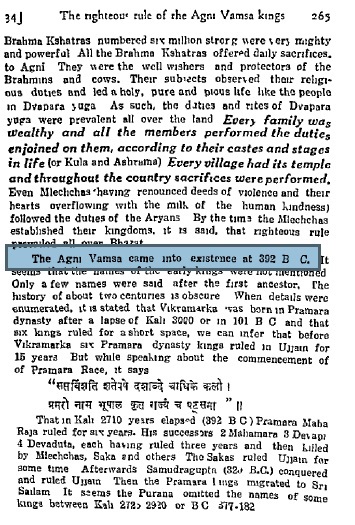 As such, let us see what the great Pandith wrote about another offshoot of the Satavahanas. Per his manuscripts, many braahmanas arose to the position of niyukthas or niyogins (officials). This took a literal form in the name of the Niyogi Brahmin community that is famous in Aandhra. However, a section of this community recognised the breach of varnashrama dharma (and indeed Rajadharma) that they had committed by taking up these bureaucratic/ministerial positions.
As such, let us see what the great Pandith wrote about another offshoot of the Satavahanas. Per his manuscripts, many braahmanas arose to the position of niyukthas or niyogins (officials). This took a literal form in the name of the Niyogi Brahmin community that is famous in Aandhra. However, a section of this community recognised the breach of varnashrama dharma (and indeed Rajadharma) that they had committed by taking up these bureaucratic/ministerial positions.
They therefore performed a great Yajna at Mount Arbudha (Mt. Abu), and initiated as Brahma-Kshatras, aka Agnivamsa Kshatriyas. While traditional Chandra and Suryavamsa Vedic Kshatriyas continued to exist (like the Imperial Guptas), these Pauranic Agnivanshis would later attain great fame under Paramaara Vikramaditya and Bhoja.
 Although there are ancient Vedic Kshatriya lines among Rajputs and other Kshathriyas of today (i.e. the Chandravamsa Haihaya Kalachuris), the Puraanas assert that the 4 Parent Agnivamsa Dynasties are the fountainhead of the 36 clan Rajput System. This is validated by many inscriptions by later Rajput lineages themselves.
Although there are ancient Vedic Kshatriya lines among Rajputs and other Kshathriyas of today (i.e. the Chandravamsa Haihaya Kalachuris), the Puraanas assert that the 4 Parent Agnivamsa Dynasties are the fountainhead of the 36 clan Rajput System. This is validated by many inscriptions by later Rajput lineages themselves.
Therefore, while it is important that actual Rajput dynasties such as the Pratiharas and Chahamanas be guarded against appropriations, the non-Rajput dynasties (such as Brahmin Shahis and Soodhra Mauryas) should also be respected. Rather than claim every sovereignty in Bhaarathavarsha (i.e. Imperial Cholas of Dravida Desa), such illustrious communities should be content with that which they can legitimately claim (producing more than enough of such prestigious personalities and dynasties).
Just as Vishvamitra was a rare Kshathriya who became a Braahmana, so too did these Brahmin lineages initiate and become authentic Kshathriya (no one questions the Kshathriya credentials of these gotras today).
Pandith Chelam also clarifies the erroneous view of modern Indologists who assert that Salivahana and Satavahana are cognates. They are not. Salivahana was the descendant of Paramaara Vikramaadithya. Paramaara Saalivaahana finally destroyed Saka power and conquered them totally.
The Soodhra Nandas claim credit for uprooting the majority of Vedic Kshatriya dynasties. They were then replaced by the Brahmin Sunga, Kanva, & Satavahana dynasties, before a Vedic Kshathriya restoration under the Imperial Guptas. This dynasty was finally ended by the Naagavanshis. Following that, it is the Agnivanshi Kshathriyas who dominated the history of Madhyadesa, and produced numerous great Empires.
Conclusion
Harmony occurs not only via truth, but in respecting the rights and claims of others. Otherwise, the internecine warfare that Dharmikas are known (and mocked for, the world over) becomes the norm. All these caste groups think themselves “chanakyan genius!” for allying with videshis against fellow Bhaaratheeyas. Perhaps they should take a look at Chanakya‘s own infamous fall and take a page out of Krishna Niti instead.
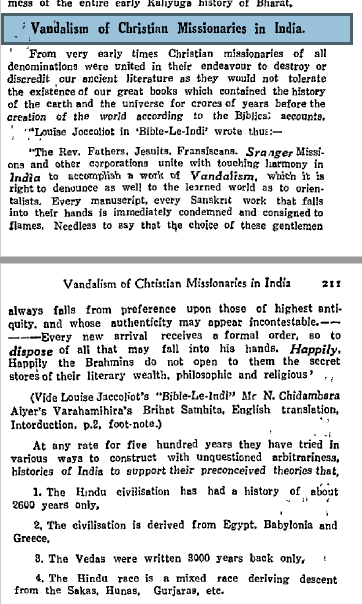 Perhaps the best message is the one that Pandith Chelam himself inscribed at the end. The Satavahana Dynasty heralded the rise of the Aandhras, but also the fall of varnashrama dharma. Those who claim to be “trads” would do well to heed his call that it would be best if all Hindus learn how to live with each other as equals. Endogamy need not clash with legal equality, which in the present time, is the key to harmony.
Perhaps the best message is the one that Pandith Chelam himself inscribed at the end. The Satavahana Dynasty heralded the rise of the Aandhras, but also the fall of varnashrama dharma. Those who claim to be “trads” would do well to heed his call that it would be best if all Hindus learn how to live with each other as equals. Endogamy need not clash with legal equality, which in the present time, is the key to harmony.
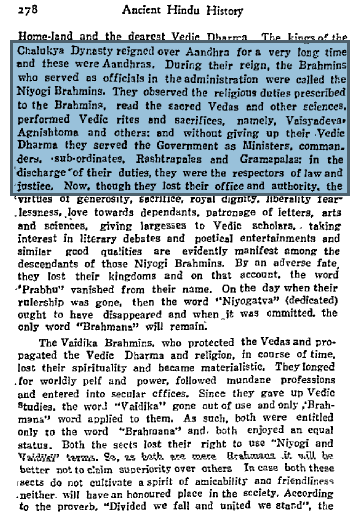 References:
References:
- Rao, P. Ragunadha. History and Culture of Andhra Pradesh: From the Earliest Times to 1991. New Delhi: Sterling Publishers, 2012. 1-23
- Durga Prasad, G.History of the Andhras up to 1565 A. D. Guntur: P.G. Publishers.1988
- Hist. Nat. VI. 21. 8 23. 11., quoting Megasthenes
- True Indian History. http://trueindianhistory-kvchelam.blogspot.com/2009/09/aandhrasaatavahana-or-saatakarni.html
- Sitaramamma, J. Mahayana Buddhism in Andhradesa. Delhi: Eastern Book Linkers. 2005
- Kota, Venkatachalam Paakayaaji (Pandith). Chronology of Ancient Hindu History Part I. Vijayawada: AVG.
- Somadeva, Ed. Arshia Sattar. Tales from the Kathasaritsagara. London: Penguin Classics.1994
- Subramaniam, K.R. Buddhist Remains in Andhra & The History of Andhra. Madras: Diocesan Press. 1932
- Sastri, K.A.Nilakantha. A History of South India. New Delhi: Oxford. 2015
Editor's Note: This Article was Updated on August 15, 2023, in response to a reader's polite correction regarding the location of Aandhra Mahavishnu.
